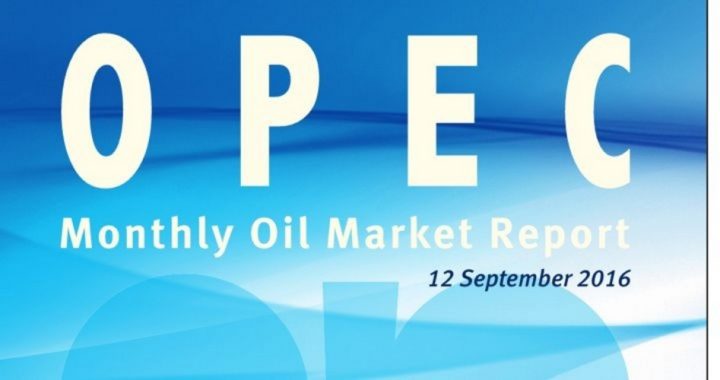
Wednesday’s announcement from OPEC about an agreement to cut production to shore up crude oil prices was met with both delight and scorn by observers. Exuded Phil Flynn, senior energy analyst at Price Futures Group:
This is the first OPEC deal in eight years! The cartel proved that it still matters even in the age of shale. This is the end of the “production war” and OPEC claims victory.
Bunk, said David Petraeus, the former CIA director who was forced to resign under a cloud in November 2012 and who subsequently was hired by Wall Street firm Kohlberg Kravis Roberts to chair the firm’s newly created KKR Global Institute:
It’s nonsense. Oil prices never should have gone up [in the first place]. The Saudis will continue to pump. So will the Iraqis and the Libyans.
Oil futures traders agreed with Flynn and drove the price of crude almost 10-percent higher in the days after the announcement.
The reality emerged shortly after the announcement by OPEC: It wasn’t really an agreement to cut production after all. It was an agreement, hammered out after six long and reportedly testy hours behind closed doors in a “side meeting” in Algeria, to appoint a committee to study the matter and come up with options that the faltering cartel will consider at its next meeting in late November in Vienna.
All of which sounds familiar. In April much was expected of an agreement to limit production, but reality set in when Iran refused to go along with it. This time the Saudi Arabian oil minister initially offered to cut production by a million barrels a day if the rest of the 14-member cartel would go along. That was scuttled, according to observers, in favor of a much lower, and more tenuous, offer: cut production by 200,000 and 700,000 barrels a day. Even if — and that’s a big IF — the contentious cartel did cut production by 700,000 bpd, it would bring production back to where it was in November 2014 when Saudi Arabia announced it was going to maximize production in order to keep its market share from moving to the Americans.
The world’s daily production of crude from all sources is barely 80 million barrels. OPEC currently produces 32 million, or about 37 percent. A cut of 700,000 barrels a day represents less than 10 percent of total daily production, and that’s a dream number. Reality is much lower: Production cuts of 200,000 are more likely, if there is any cut at all. That’s four percent, not 10 percent.
But obstacles even to reaching that lower number are massive: Iran remains determined to continue to increase its production from 3.6 mbd to more than 4 million. Libya and Nigeria are just now coming back online following disastrous events there that cut their crude oil production. And Venezuela sits on top of the world’s largest crude oil reserves and is desperate to increase its own production following the scandal involving its state-owned oil company Petrobras.
History also records that OPEC members are notoriously willing to ignore pronouncements from the leading producer, Saudi Arabia. That country is the driving force behind limiting production — a startling turnabout from November 2014 when it unilaterally announced it was going to continue pumping crude at maximum rates. The unspoken and unwritten purpose then was to flood the market and drive crude prices below breakeven points for the troublesome American frackers. This would (in theory) force them to leave the market and turn de facto price control of oil back to OPEC.
It didn’t work out that way. Now Saudi Arabia is facing a financial crunch. In June 2014, it had an estimated three quarters of a trillion dollars in foreign reserves ($737 billion to be more precise) and believed that it could force American oil producers out of the market, even if it went into deficit.
Today those reserves have shrunk by a quarter, to $555 billion, with no end in sight. Last year its budget deficit approached $100 billion, $8 billion a month, and still the oversupply of crude worldwide remains.
What also remains is shrinking demand worldwide. China’s imports are falling, and the United States’ economy has essentially flatlined (with projected GDP growth at barely more than one percent).
Finally, American oil producers have cut their breakeven points so far that they are aggressively bringing back stacked oil rigs into production. If the futures traders are right, and crude trades at $50 a barrel or higher in the coming months in anticipation of an OPEC “deal,” it will provide additional incentive for those American producers to increase their production even further.
The announcement on Wednesday from OPEC was not an agreement. It was an agreement to talk about possibly, maybe, perhaps, someday, having an agreement that would be enforceable. By that time, of course, marginal OPEC producers may find themselves being forced out of the market.
Remember: Saudi Arabia is putting its precious Aramco oil company on the block for sale in 2018. It has a very personal interest in keeping oil prices as high as possible in order to obtain a premium price for the company. It has already cut government workers’ salaries substantially and is cutting subsidies for electricity and gasoline for its citizens. It is getting desperate.
Any deal in November will not come out of strength, but out of weakness, thanks to the remarkable free market in energy that still exists in the United States.
A graduate of an Ivy League school and a former investment advisor, Bob is a regular contributor to The New American magazine and blogs frequently at LightFromTheRight.com, primarily on economics and politics. He can be reached at [email protected].



